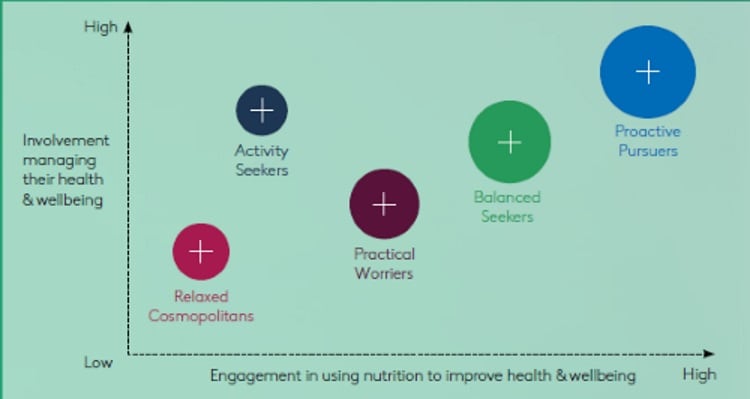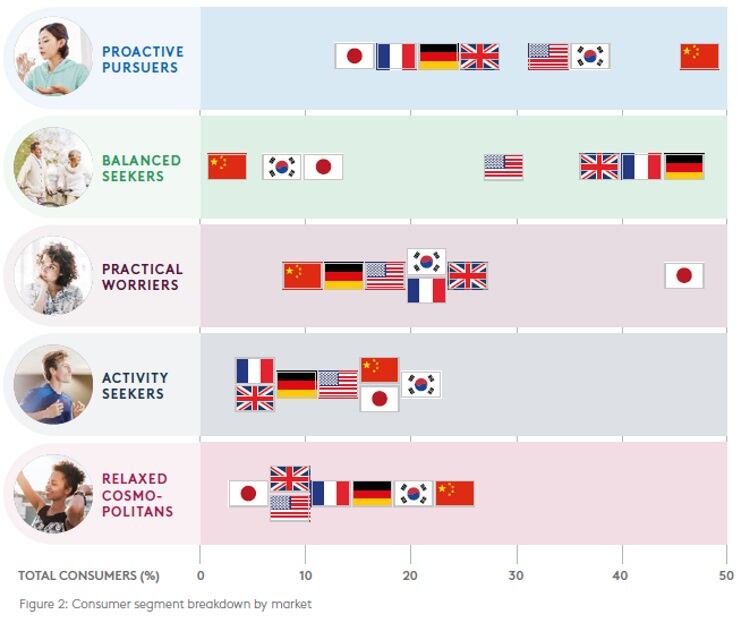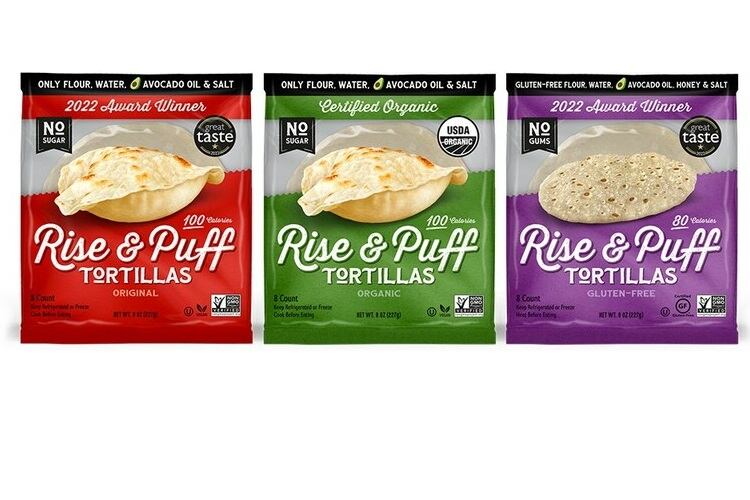With the $66bn global wellbeing nutrition market growing at 6% annually (Euromonitor), there’s a wealth of opportunities for brands to create products that answer consumer demands.
However, while wellbeing is a priority for consumers across the globe, their methods to achieve their goals differ. Against a backdrop of changing consumer behaviour accelerated by the global pandemic, Nutiani partnered with Ipsos to gain a deeper understanding of these for its second Global State of Health and Wellbeing report.
In May 2022, Ipsos surveyed almost 6,000 consumers across seven markets – the US, UK, France, Germany, China, Japan and Korea – on their motivations and perceptions on the role of nutrition in supporting their health goals.
The big five

The company’s 2021 survey found nine in 10 consumers prioritise health and believe it is important to adopt a well-balanced diet. While this hasn’t changed, the latest survey found consumers have different approaches to healthy eating.
Based on respondents’ engagement, awareness, motivations and attitudes toward wellbeing and nutrition, the research revealed five distinct consumer segments.
Proactive Pursuers (27%)
The biggest proportion of global consumers fall within this category. This group strongly believe that health is holistic (physical, mental and emotional wellbeing) and that nutrition has a big impact on the overall quality of life. As such, they adopt a scientific and highly disciplined approach towards food.
- 74% eat a balanced diet
- 72% exercise regularly
- 64% get sufficient sleep
They are also prepared to pay more for products they believe in and are happy to sacrifice convenience and indulgence for healthier treats.
81% of this group say they face barriers in managing their nutrition, including cost, taste and confusing or confliction information.
Balanced Seekers (22%)
These consumers strongly believe that nutrition plays a role in their overall health, but recognise there are factors beyond their control, so take a more practical and relaxed approach to health.
- They try to consume more natural, unprocessed foods
- 61% believe they get sufficient sleep
- 59% follow a balanced diet
- 58% spend time on activities they enjoy
Practical Worriers (20%)
This cohort are concerned about their declining physical and mental health and acknowledge that what they eat will impact their overall wellbeing, but are focused on making small, manageable changes where necessary.
They find it difficult to stick to a healthy diet and feel guilty about eating unhealthily, so lean towards a simple and traditional approach to eating. Many tend to eat more home-cooked meals.
Relaxed Cosmopolitans (16%)
This cohort are preoccupied with their busy lifestyles and are too busy to worry about diet or do not feel sufficiently knowledgeable to choose the right healthy foods. As such, they take a balanced, sensible and informed approach to life. They are less likely to be scientific and feel they are bombarded by too much information, but still try to consume natural, unprocessed foods.
Ethically sourced and sustainable manufacturing is important for them.
Activity Seekers (14%)
These consumers are optimistic and competitive, preferring to manage their health through physical activity and view nutrition as fuel for exercise.
They like being at the forefront of things and want to know all about the latest tech.
They are willing to try new diets or new products and are prepared to sacrifice convenience for healthy items that boost their performance. As such, they are the biggest consumers of energy drinks, nutritional powders and protein-fortified baked goods and snacks.
Common barriers and priorities

Although consumers are more informed than ever, the research found four out of five segments do not feel sufficiently knowledgeable about healthy foods to make the right choices. The remaining Proactive Pursuers are held back by conflicting information on available products.
Incomplete and discrepancies in information are likely to have contributed to trust emerging as a significant concern across all segments, especially in relation to health claims and food safety. Findings also reinforced the need for brands to overcome common barriers to healthy eating such as taste, cost and convenience.
In addition, consumers are increasingly seeking sustainable treats, believing the responsibility is on manufacturers to create environmentally friendly value chains.
This expectation may also be contributing to most segments’ preference for natural and less-processed foods, which are known to have a lower environmental impact.
“Although consumers are recognising the importance of nutrition to achieve holistic health, existing solutions are not adequately addressing gaps in trust and information as well as emerging sustainability preferences,” said Dan Luo, director of Active Living at Fonterra.
“The commonalities in these unmet needs offer opportunities for innovation and consumer education to encourage them to adopt healthy diets.”
Tailored approach

The report also dives into individual markets, examining the impact of macro-environment factors – such as cultural norms, reliance on social media and perceived challenges – on consumer attitudes and behaviours.
Western markets tend to have a higher proportion of the Balanced Seeker segment, reflecting a more balanced approach to nutrition, health and wellbeing.
On the flip side, Proactive Pursuers make up the largest proportion in South Korea and China, both of which have a long-standing culture of consuming medicinal foods for wellbeing.
“We can see through this research that our target consumers are unified in taking a holistic approach to health, however, there is no one-size-fits-all solution,” said Charlotte Ortiz, global brand marketing manager of Nutiani.
“The five segments not only have different motivations and barriers, but also turn to different sources for information – from social media and online reviews to endorsement by healthcare professionals.
“There is a need for brands to develop tailored solutions with products and strategies that speak to consumers’ unique motivations while addressing the challenges they are facing,” she added.





